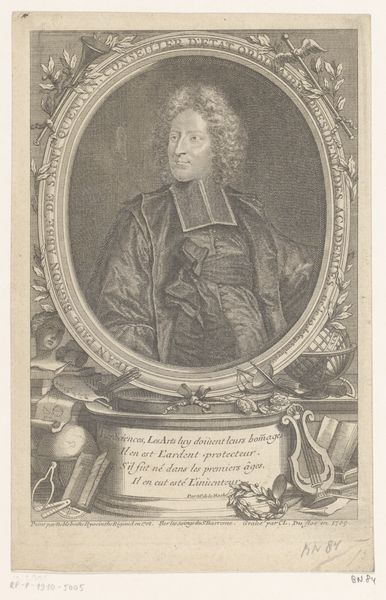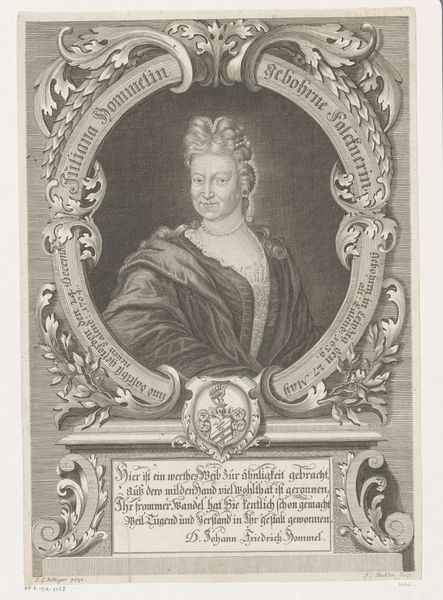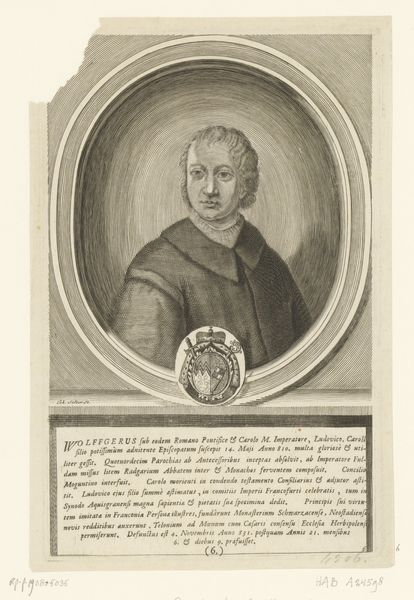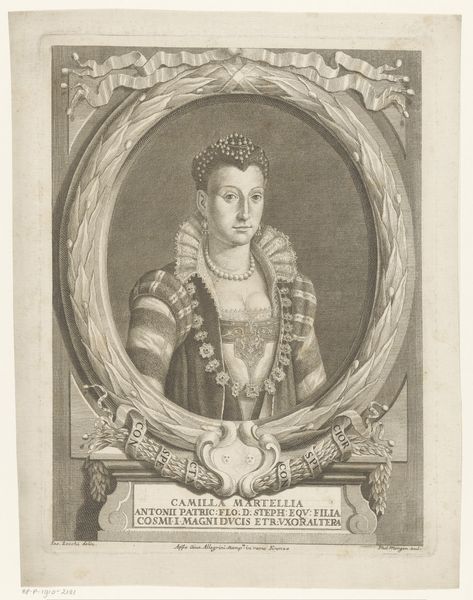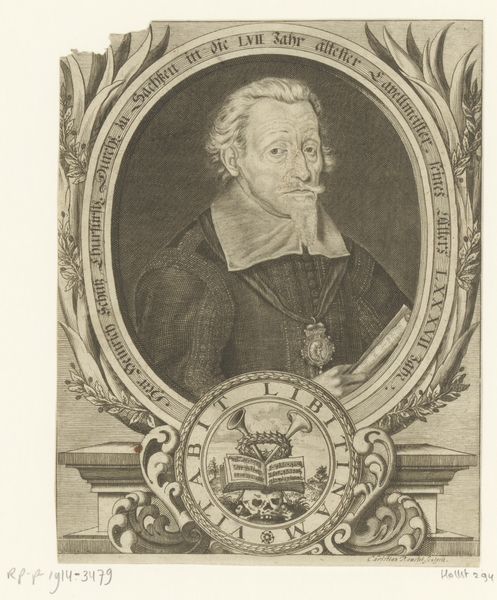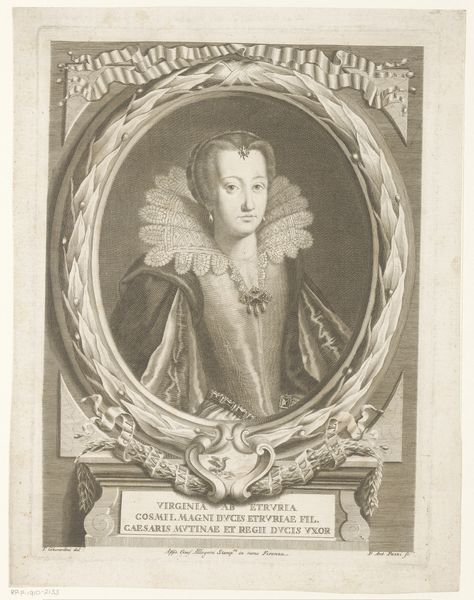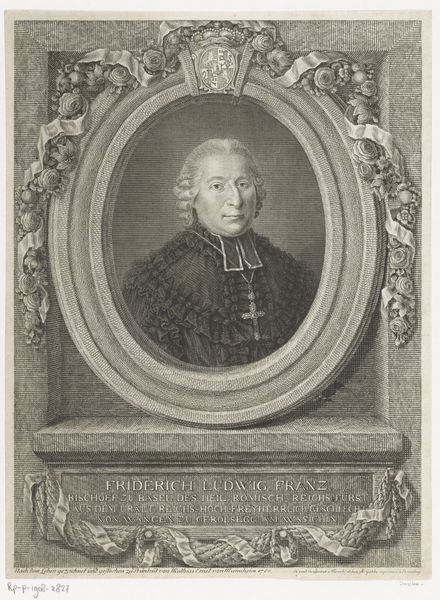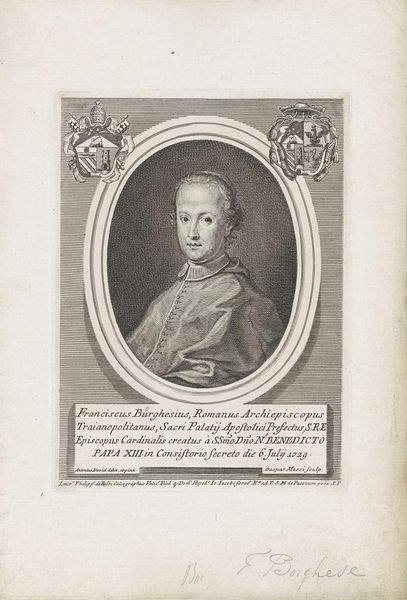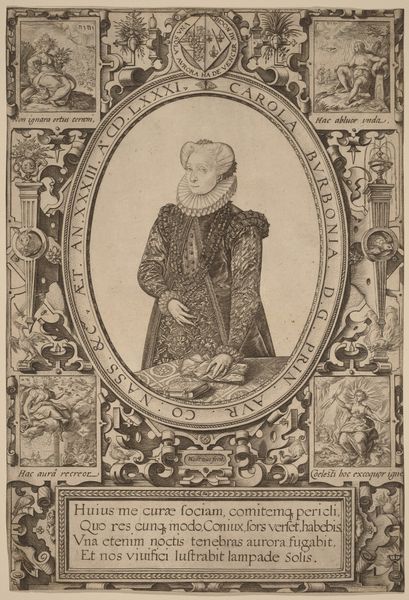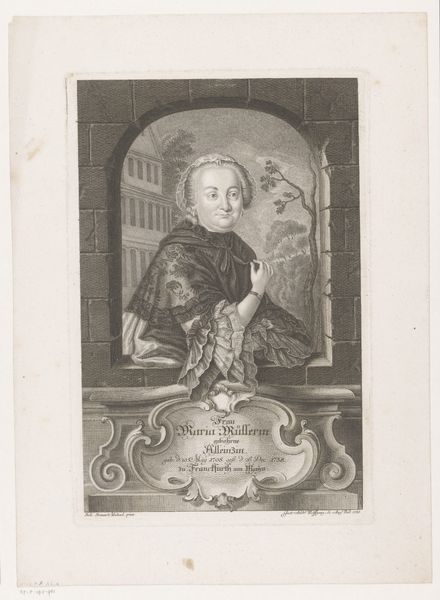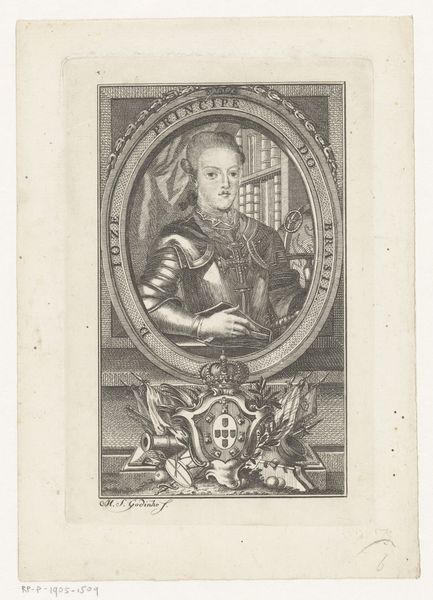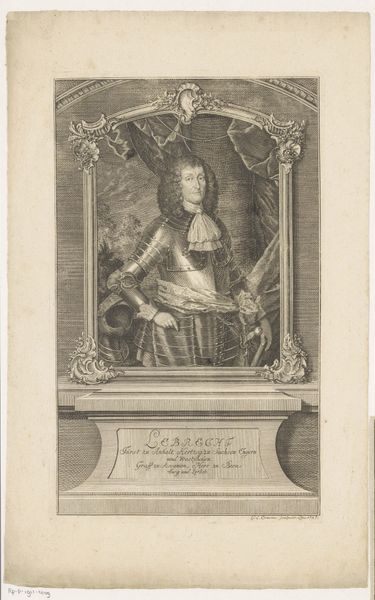
drawing, print, paper, engraving
#
portrait
#
drawing
#
baroque
# print
#
sculpture
#
paper
#
engraving
Dimensions: 358 × 253 mm (plate); 431 × 322 mm (sheet)
Copyright: Public Domain
Editor: Here we have Adriaen Haelwegh's portrait of "Cosimo I," probably created sometime between 1666 and 1761. It’s an engraving printed on paper. The subject’s serious gaze strikes me, especially considering his age. How do you interpret this work? Curator: This portrait exists within a complex web of power and representation. As an activist, I see beyond the surface-level depiction of Cosimo I, the Grand Duke of Tuscany, and question the implications of his privileged position within the context of 17th- or 18th-century European society. Consider how gender, class, and lineage intersect within the Medici dynasty. What expectations are embedded in this young heir? Editor: That’s interesting. I was mostly drawn to the aesthetics. Curator: The Baroque style is important to consider; however, to limit our interpretation to just style is limiting. Notice the deliberate construction of identity through visual cues. This portrait demands a critical understanding of its function within a patriarchal society. To me, it's a powerful visual argument on what society thought the role of men should be during this time. Do you agree? Editor: I see your point about the societal context dictating his representation, even at a young age. I had just considered him in isolation, a boy from long ago. Curator: Exactly! So, by recognizing the power dynamics inherent in portraiture, we can expose not only Cosimo I’s identity but also society. How do you feel about this new point of view? Editor: It adds a whole new dimension to what I thought I knew about the work. It’s a reminder to always consider the social and historical framework.
Comments
No comments
Be the first to comment and join the conversation on the ultimate creative platform.
